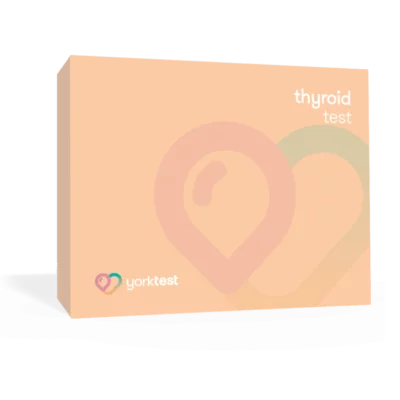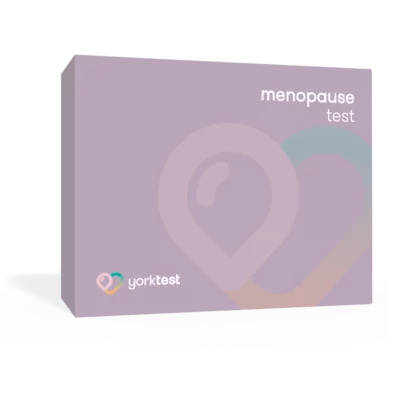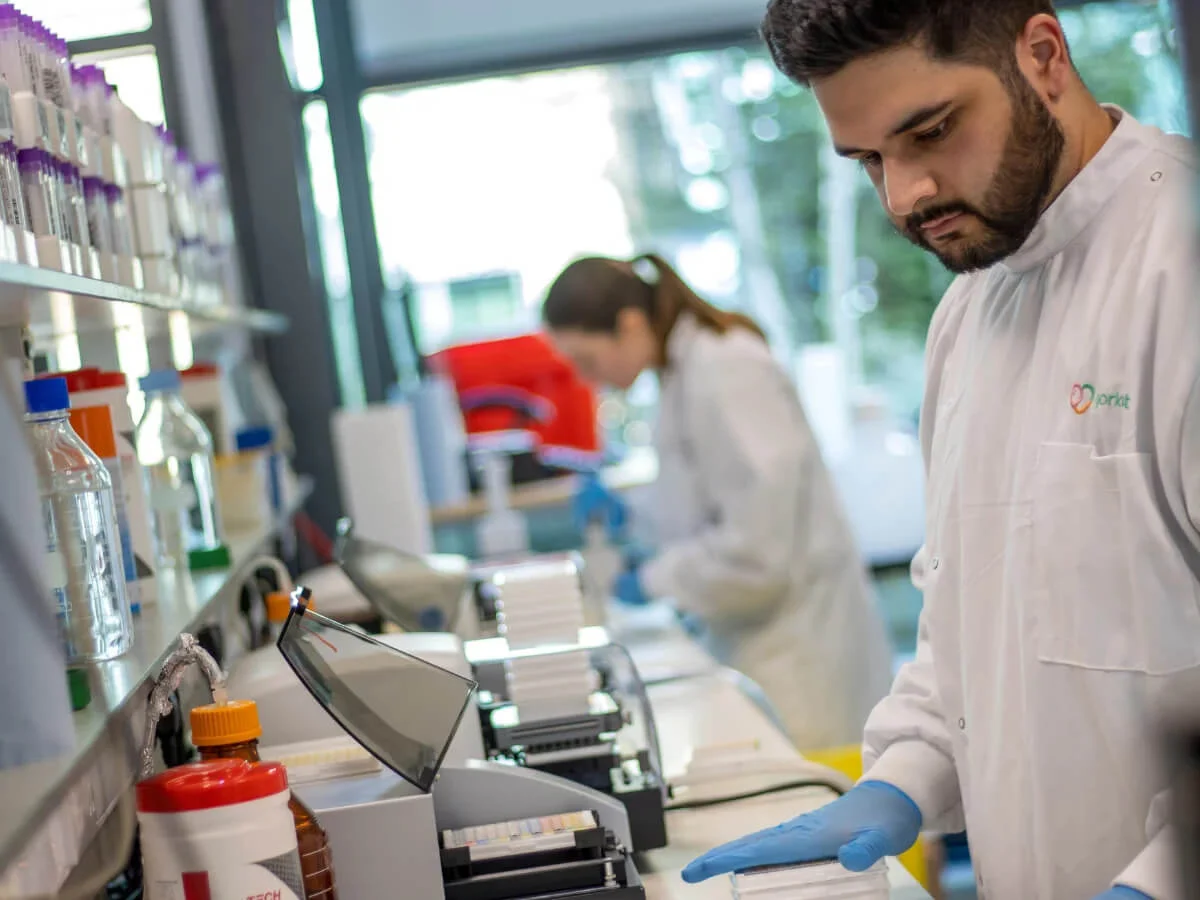
Understanding Testosterone Levels in Women - Symptoms, Causes, and Solutions
- Causes of Low Testosterone In Women
- Ageing
- Menopause
- Ovarian Issues
- Pituitary Gland Problems
- Adrenal Glands Issues
- Certain Medications
- Lifestyle Factors
- Other Conditions
- Symptoms of Low Testosterone in Women
- Decreased Sex Drive
- Mood and Cognitive Changes
- Sleep Disturbances
- Energy and Physical Strength
- Changes in Body Composition
- Skin and Hair Changes
- Menstrual and Sexual Health
- Menopause-like Symptoms
- How To Treat Low Testosterone in Women
- Causes of High Testosterone in Women
- Polycystic Ovary Syndrome
- Congenital Adrenal Hyperplasia
- Intersex Conditions
- Tumours
- Medications
- Cushingâs Syndrome
- Lifestyle and Metabolic Factors
- Symptoms of High Testosterone in Women
- Excess Hair Growth (Hirsutism)
- Skin Changes
- Menstrual and Reproductive Effects
- Voice and Body Changes
- Emotional and Sexual Health
- How To Treat High Testosterone in Women
- Optimise Your Health With an At-Home Test From YorkTest
Much has been said about testosterone in men, while testosterone levels in women can often be overlooked. Although testosterone levels in women are naturally lower than in men, the role testosterone plays in women’s overall health and well-being is just as important.
Abnormal testosterone levels, whether high or low, can lead to various symptoms and health issues for women. However, what is perhaps surprising is that many women don’t know that testosterone is the culprit for some of their health issues. From problems such as fatigue, hot flushes, and weight gain, to slightly more unusual consequences, ensuring testosterone levels are managed is a great way for women to optimise their health.
In this blog, we look at the symptoms of low and high testosterone in women, the causes of it, and how it can be treated.
Causes of Low Testosterone In Women
There are many signs of low testosterone in women. Testosterone does decline naturally with age, but some of the other causes may surprise you.
Ageing
One of the most common causes of lower testosterone levels in women is ageing. Women’s testosterone levels peak during their 20s (similar to men) at around the 1.7 nmol/L mark, and then gradually decrease as they get older, going as low as 0.1 nmol/L, depending on certain circumstances. Lower testosterone levels with age are natural. However, they should still be monitored and managed to ensure they don’t go too low.
Menopause
Menopause can cause many health issues for women as they age, and lower testosterone levels are one of them. The ovaries, alongside the adrenal glands and the brain, are the primary producers of testosterone. Therefore, it is unsurprising that menopause can have a direct impact on lower testosterone levels.
Ovarian Issues
While we’re on the subject of ovaries, ovarian issues can also cause lower testosterone levels. Removal of ovaries, also known as oophorectomy, or conditions like premature ovarian insufficiency (where the ovaries stop working before age 40), can lead to low testosterone.
Pituitary Gland Problems
The pituitary gland plays a central role in controlling hormone production throughout the body, including signals that regulate testosterone. If the gland is affected by tumours, injury, or other disorders, it can disrupt the release of luteinising hormone (LH) and follicle-stimulating hormone (FSH), both of which are essential for testosterone production. As a result, pituitary problems may lead to abnormally low testosterone levels, alongside other hormonal imbalances that can affect overall health.
Adrenal Glands Issues
As mentioned previously, the adrenal gland is one of the primary producers of testosterone. Therefore, it is not surprising that issues with the adrenal gland, such as Addison’s disease, can impact testosterone levels.
Certain Medications
Medications can result in unusual and surprising side effects. Some medications can interfere with the body’s natural hormone balance and lower testosterone levels. For example, some types of oral contraceptives can affect how sex hormones are regulated, while long-term use of corticosteroids may suppress testosterone production.
Lifestyle Factors
While admittedly less common, being underweight, having malnutrition, or even doing excessive amounts of exercise can lead to lower testosterone in women.
Other Conditions
Certain health conditions can also play a role in lowering testosterone. For instance, Turner syndrome affects ovarian development and hormone production, while hypopituitarism (an underactive pituitary gland) reduces the signals needed to maintain normal testosterone levels.
Symptoms of Low Testosterone in Women
Symptoms of lower testosterone in women can vary from one individual to another, and many of the symptoms of low testosterone can also be caused by conditions like low estrogen, thyroid problems, and other hormonal imbalances. Regardless, some of the most common symptoms can include:
Decreased Sex Drive
One of the most common symptoms can be a decrease in sex drive, also known as having a low libido.
Mood and Cognitive Changes
Low testosterone can sometimes affect emotional well-being, leading to depression, irritability, or anxiety. Some women also notice difficulties with concentration, focus, or memory.
Sleep Disturbances
Insomnia, restless nights, or disrupted sleep patterns may develop over time when testosterone levels drop, which often leads to daytime fatigue.
Energy and Physical Strength
Persistent tiredness or low energy is a common sign. Because testosterone supports muscle development and maintenance, reduced levels can also cause a gradual loss of muscle mass and strength.
Changes in Body Composition
An increase in body fat, particularly around the abdomen, is sometimes linked to low testosterone. At the same time, reduced bone density may occur, raising the risk of osteoporosis over time.
Skin and Hair Changes
Women may experience thinning hair, drier skin, or both. These subtle changes are often overlooked, but they can sometimes signal a hormonal imbalance.
Menstrual and Sexual Health
Irregular menstrual cycles and vaginal dryness are two common symptoms, with the latter often causing discomfort during intimacy.
Menopause-like Symptoms
Hot flushes and night sweats, typically associated with menopause, can also be triggered by low testosterone levels.
How To Treat Low Testosterone in Women
Low testosterone in women is usually managed with a mix of medical treatment and lifestyle changes. The most common medical approach is testosterone replacement therapy (TRT), typically prescribed as a cream or gel applied to the skin. In some cases, implants or injections may also be used. These treatments can help restore hormone levels and ease symptoms, but they should always be overseen by a healthcare professional to ensure safe, tailored care.
Alongside medical treatment, lifestyle adjustments can play a big role in supporting hormone balance. Eating a balanced diet, staying active with a mix of strength and cardio exercise, getting enough quality sleep, and managing stress can all have a positive impact.
Other options may be considered, such as hormone replacement therapy (HRT) for menopausal symptoms, or off-label use of testosterone products designed for men at lower doses. In some cases, DHEA supplements may be discussed, but once again these should only be taken under medical guidance due to potential risks.
Causes of High Testosterone in Women
While there are fewer reasons for women to have too much testosterone, some of the most common reasons for higher levels of testosterone in women include:
Polycystic Ovary Syndrome
Polycystic Ovary Syndrome, or PCOS for short, is by far the most common cause of high testosterone in women. The condition leads the ovaries to produce excess androgens, which can cause things like irregular periods and weight gain. It is also linked to insulin resistance, which may worsen symptoms.
Congenital Adrenal Hyperplasia
Congenital Adrenal Hyperplasia, or CAH for short, is also another common cause of high testosterone levels in women, although not quite as common as PCOS. It is a genetic condition affecting the adrenal glands, causing them to produce too much testosterone.
Intersex Conditions
A less common cause is intersex conditions. Intersex conditions involve natural variations in sex characteristics, such as chromosomes, reproductive organs, or hormone levels. In some cases, these differences can lead to higher testosterone in women, affecting physical development, menstrual cycles, or fertility, depending on the specific condition.
Tumours
Tumours in the ovaries or adrenal glands can lead to excessive androgen production, which can, in turn, lead to higher testosterone.
Medications
Some medicines, particularly anabolic steroids or certain hormone therapies, can raise testosterone levels in women. This effect is usually linked to treatments involving testosterone or drugs that alter hormone balance. This can raise testosterone levels.
Cushing’s Syndrome
A condition caused by prolonged exposure to excess cortisol, Cushing’s Syndrome can disrupt normal hormone regulation and may contribute to elevated testosterone levels.
Lifestyle and Metabolic Factors
Obesity, insulin resistance, and related metabolic issues don’t directly cause high testosterone but can influence hormone activity. These factors are often associated with PCOS and may worsen its symptoms.
Symptoms of High Testosterone in Women
High testosterone in women can manifest in more ways than just developing traditionally male attributes, such as facial hair and a deepening voice. Symptoms can include:
Excess Hair Growth (Hirsutism)
High testosterone can cause coarse, dark hair to grow in areas where women typically have little hair, such as the face, chest, back, or even abdomen.
Skin Changes
Increased androgens often stimulate oil glands, leading to oily skin and acne. At the same time, testosterone can trigger scalp hair thinning or male-pattern baldness.
Menstrual and Reproductive Effects
Elevated testosterone may disrupt the menstrual cycle, leading to irregular or absent periods. In more severe cases, it can interfere with ovulation and cause infertility. Some women may also notice reduced breast size or an enlarged clitoris.
Voice and Body Changes
With higher testosterone, women’s voices may deepen due to effects on the vocal cords, while higher testosterone can also increase muscle mass and sometimes contribute to weight gain, especially around the abdomen.
Emotional and Sexual Health
Hormonal imbalances can affect mood, leading to irritability, anxiety, or depression. Libido may also be reduced despite the rise in testosterone.
How To Treat High Testosterone in Women
High testosterone in women can usually be managed with a combination of medical treatment and lifestyle changes. The right approach depends on the underlying cause, such as PCOS or adrenal conditions, as well as the severity of symptoms.
Medical treatments may include oral contraceptives to regulate periods and reduce androgen production, spironolactone to block testosterone and improve acne or hirsutism, or metformin to help with insulin resistance linked to PCOS. In some cases, other options such as glucocorticosteroids, eflornithine cream for facial hair, or surgery to remove testosterone-producing tumours may be considered. Similar to having lower testosterone levels, important lifestyle adjustments (like a healthy diet) can make a big difference.
Since high testosterone can have different causes and effects, treatment should always be guided by a healthcare professional and tailored to individual needs for the best long-term results.
Optimise Your Health With an At-Home Test From YorkTest
Monitoring and managing your testosterone levels is a great way to optimise your health, and this is something that we can help you with. If you are looking for an at-home testosterone test for women that has high-quality aftercare and support from industry-leading experts, then why not try our female hormones test? We also have a variety of at-home tests, from our holistic annual health check, to tests for specific food allergies or intolerances. So if you are looking to optimise your health, contact us today.









